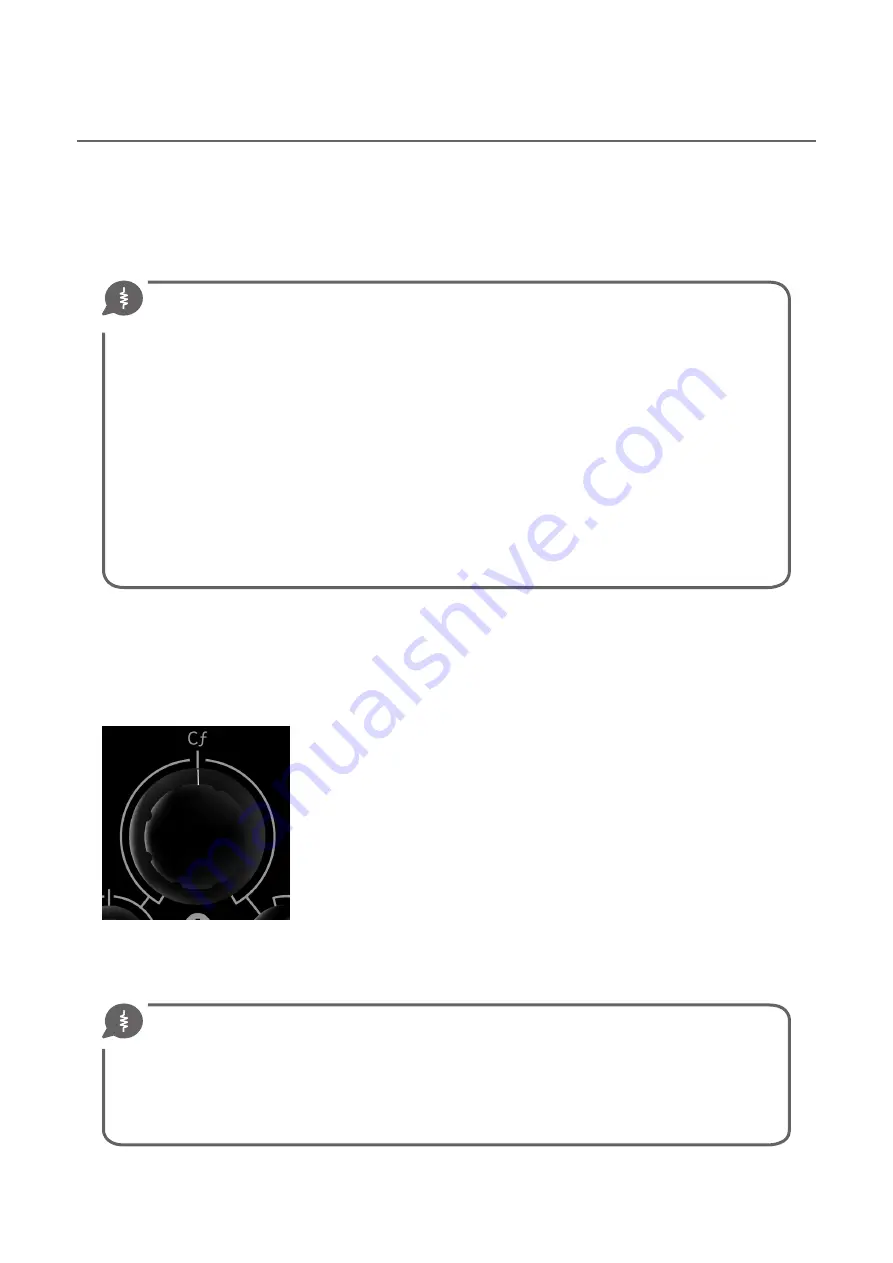
THE COMPONENTS
[
21
]
the Filters section
It’s the upper side of the front panel. It’s the home of the three filterboards and related audio preamplifier and
CV injection circuits and controls.
They are labeled as A, B and C.
Most of the features available are common for all three filters, with the exception of the A Filter Overload circuitry,
shown in form of
OVER/CLEAN
switch, and the B-
STEREO
mode.
The Circuit
The three filters are our personal elaboration of the Sallen-Key filter thought by Nyle Steiner in his 1974
version of his famous design, hosted in the great Steiner-Parker Synthacon. It was a 12 dB/oct slope and it still
remains a 12 dB/oct slope. But via the internal routing of VERTICE you can reach a slope of 36dB/oct nominal.
In real-life however attenuation is less, max about 30 dB/oct, depending by input level, resonance control and
Mode type. Electronically speaking: a diode network is used in place of the two variable resistors which make
Sallen-Key filters useful for music. The obvious characteristic of a synthesis filter is the voltage-modulable
Cutoff, so here is the magic: using a "side effect" of diode, their variable resistive behavior in front of a direct
bias current, he made it. However diode generally are for other purposes, so this particular use can be source
of "strange" behaviors.
Diode are common to reject current flow if the potential difference between anode and katode are less than,
usually, 0,5-0,7V (silicon, small signal): if this difference is not reached they stay deactivated. So, since is exactly
the audio signal which flow into the diode network it can activate, or not, a diode. It can be little up or little
down than its threshold. This is why Steiner filter can show high instability especially when high Resonance
values are involved. As we will see later indeed, Resonance is a signal feedback directly into the audio path, in
this case directly into the diode network.
You can see the original 1974 Steiner VCF circuit in the inside back cover of this manual. Values are effective
(with these component values you can build a working 1974 Sallen-Key Steiner filter).
Cƒ means
CUTOFF Frequency
. It is the point in the audible range where the
filter start to run. It's the principal control of the singular filterboard.
Its value is expressed in Hz and in the case of the VERTICE’s circuital design
the excursion between maximum (fully counterclockwise) and minimum is
about
10≤Hz≥22000
., obviously biased by the MC
f
position. We do not make
any clear reference on the panel graphics about the Hz values because of the
VERTICE’s strong
musical
character. If the intended use were measurements
or other more precision purposes like mic amplifications, compressions and
other meter-related applications it would be useful and reasonable to give
them, but it's not the case. We want you to decide by your ears, not by your
eyes. We follow this philosophy on every models/modules we design.
As said the control of
MasterCƒ
, explained later (
page 37) exerts a strong influence in the behavior of the three
individual Cƒ, so it is therefore useful to operate the four controls concurrently, although not necessarily at the
same time. With five minutes of use you can easily understand the ratio between the four elements.
Where is my Cutoff Frequency?
To understand at what frequency you have placed your Cutoff simply you can increase the Emphasis
value to obtain a signal peak around the Cutoff frequency. Conversely if you leave the Emphasis control
close
to zero you will notice instead the classic -3dB behavior. By mathematical definition in fact the Cutoff
frequency is located in correspondence of this attenuation.
In real tough life instead, with a true zero Emphasis setting you don't really obtain a -3dB behavior from
Vertice. The signal loss is a bit more giving a "10-11 dB/oct" slope. This happen because of a small potential
leak due to the passive feedback method, so it's natural, almost vegan I should say... :)
Содержание Vertice
Страница 1: ...USER S MANUAL...
Страница 2: ......
Страница 5: ...Dedicato a Walt Bruno e Lorenzina con immenso amore Stefano...
Страница 68: ...Ratio et Cogitatio Unicam Fidem Sunt...
Страница 69: ......
Страница 70: ......






























